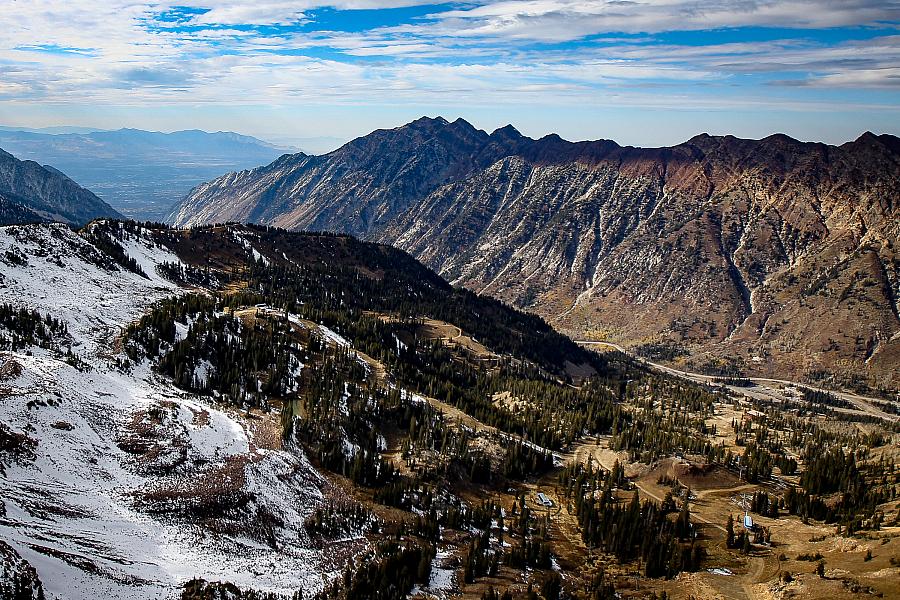Radioactive gas in Utah poses invisible cancer threat to children and families

(Photo by Adam Fondren/ Deseret News)
As I lay in my hospital bed, sifting through papers after the birth of my third child, I noticed a brightly colored flyer from the Utah Department of Environmental Quality offering a free radon test kit to Utah mothers.
I wasn’t too familiar with radon, so I added it to the paperwork stack and then, in the frenzy of new-baby checks and round-the-clock feedings, promptly forgot about it.
Several months later, I found the paper again and became curious.
As I searched and learned about the silent, naturally occurring gas produced from the breakdown of uranium that can cause lung cancer, I became more concerned.
Why hadn’t I heard about this before?
I started calling radon experts and medical professionals in Utah with questions.
I learned that one in three Utah homes has unsafe levels of radon, and the only way to know if your home is at risk is to test it. My neighbor’s house could be fine, while my home’s levels could be off the charts. (We’ve since had our home tested and mitigated. Our levels were slightly elevated, but not crazy.)
I also discovered that most Utah residents were just like me — unaware of radon and the harm it causes.
But such ignorance is dangerous, because even though Utah has the lowest smoking rate in the nation at 8.8% of the population, lung cancer remains the biggest cause of cancer deaths in the state: 4,389 deaths from 2006-2015.
Children are among those most at risk due to their growing lungs and rapid breathing, as well as their nearness to the ground where radon settles. As the youngest state in the nation — 30% of residents are under 18 versus 23% nationally) — Utah has plenty of little lungs affected.
Yet despite this silent, invisible danger, Utah has done very little about it.
There are no state laws requiring homeowners to test for radon before buying or selling a home; contractors aren’t required to install mitigation systems in newly constructed homes; landlords aren’t required to test or mitigate rental properties, nor are cities required to test low-income housing, schools, hospitals or child care centers.
Because of this, when non-smoking Utahns are diagnosed with lung cancer, it’s often stage 4 and survival rates are low.
My project for the 2019 National Fellowship, “Radioactive Ignorance,” which will be published in the Deseret News, will highlight the risks of radon exposure among the youngest and most vulnerable populations — families in low-income housing and children in schools — and document what is being done — or not — by government and community officials to address these problems.
Throughout the project, I’ll reach out to readers and community members to ensure my reporting is reflective of real-life experiences with radon and lung cancer — from lung cancer survivors and family members who’ve lost loved ones to lung cancer, to radon mitigation experts, radon education advocates, and families who are learning about radon for the first time.
As part of my community engagement efforts, I’ll work with families in low-income and rental housing to test their homes, then approach their landlords with the results and document their responses. The combination of Utah not regulating radon and the shortage of affordable housing means that many low-income families can’t be picky or demanding about their homes and apartments, leaving them stuck in radon-soaked situations with little recourse.
But it’s not just the radon in their homes that’s concerning.
Each year, Utah kids spend hundreds of hours in classrooms, cafeterias and libraries, often in schools that are decades old. I want to document which elementary schools, junior highs and high schools in the state have tested and appropriately mitigated for radon, and which schools have administrators who are unaware or choosing to ignore potential risks.
In a world filled with crises, radon is either overlooked, ignored or written off as less important than other health threats. But experts say it’s one of the few cancer risks that can actually be dealt with and reduced.
“It’s certainly not going to get you today, but it piles up,” says Dr. Wallace Akerley, co-director of the Thoracic Cancer Program at Huntsman Cancer Institute in Salt Lake City. “You can’t see it, can’t smell it — it can only get you in trouble if you’re not aware of it.”

